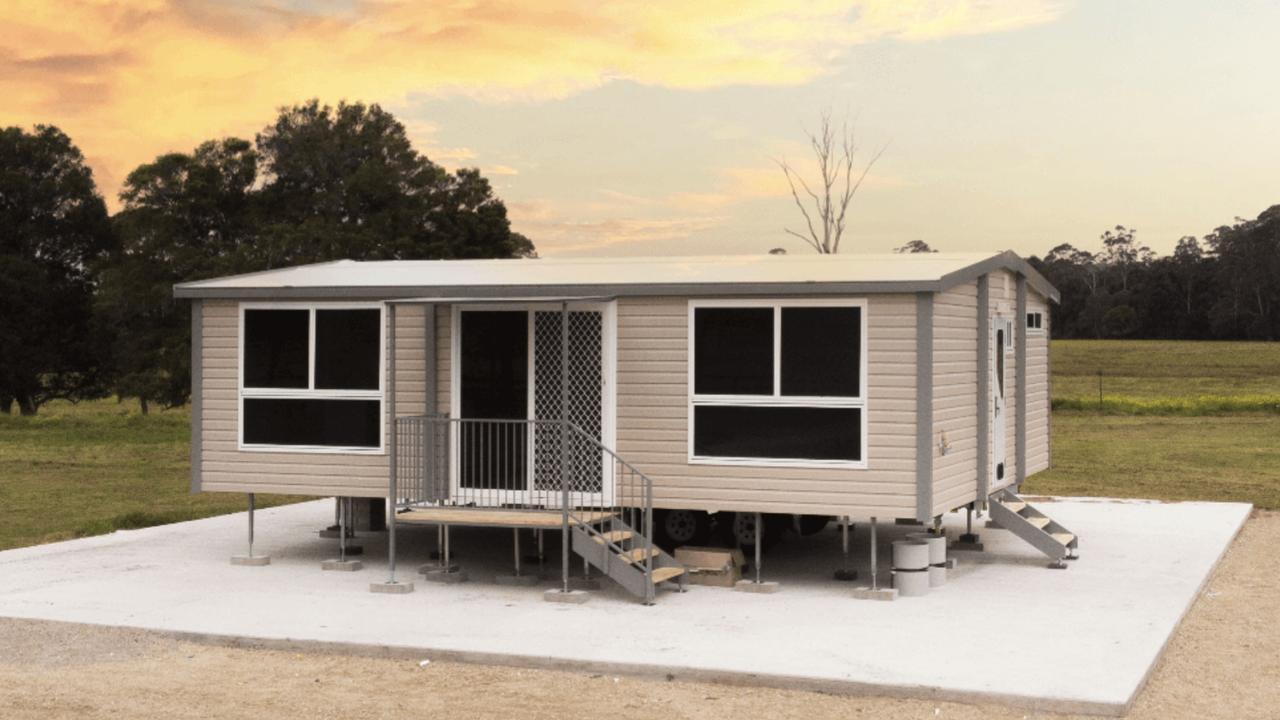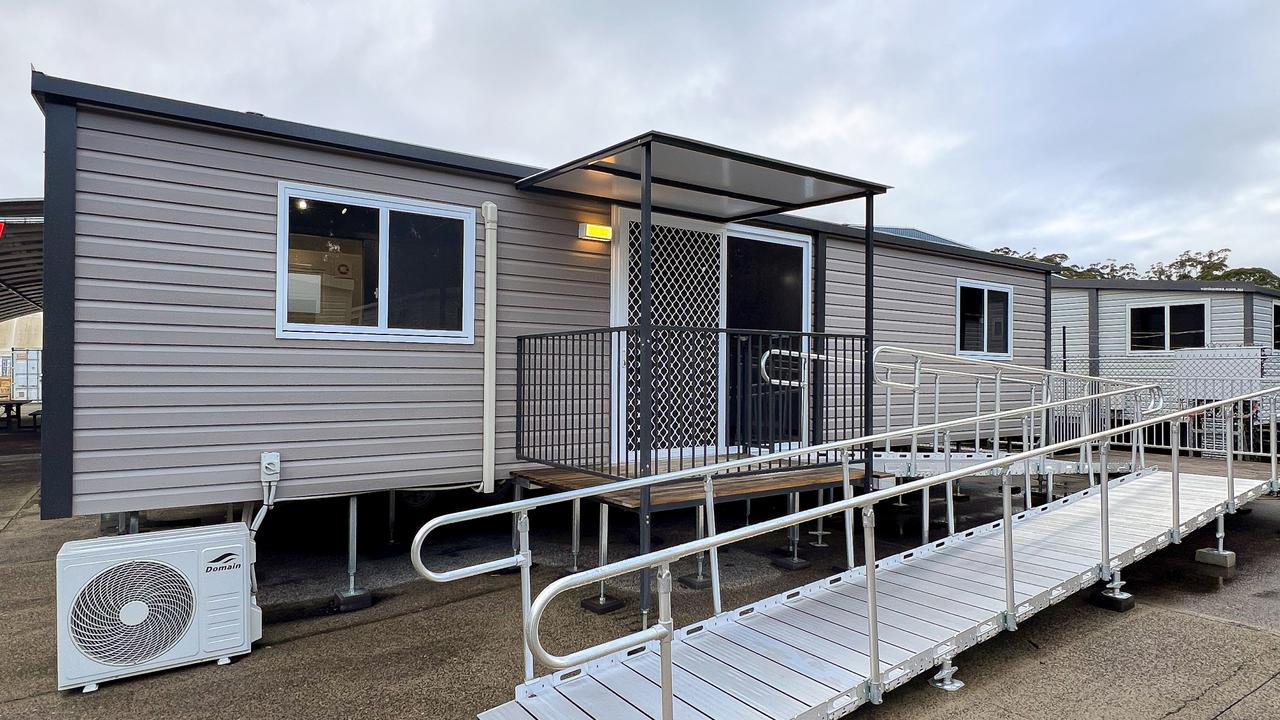Why instant homes are appealing to young Aussies amid national housing crisis
In a bold move to counteract the housing crisis, young Aussies are embracing portable, affordable dwellings that redefine homeownership. But experts are divided on one key aspect of the movement.

Amid the escalating housing challenges faced by Aussie millennials and Gen Z, a solution is redefining the concept of homeownership in Australia – instant homes.
The portable and expandable dwellings provide an alternative that sidesteps traditional market constraints, focusing on affordability and convenience.
Founder of relocatable home manufacturer VanHomes, Vito Russo said whether the tiny home was nestled on a vibrant suburban block or tucked away in a serene rural retreat, the appeal of instant homes is resonating with younger generations, introducing the novel possibility of a “home on the go.”
RELATED: Home ‘nightmares’ trapping buyers
Vic’s biggest home investors are not who you might think
Wedding trend that highlights huge problem in Australia

The VanHomes’ founder said the instant homes — also known as tiny homes and portable homes — are making waves not just for their cost-effectiveness, but because they cater to the mobile lifestyles of today’s young people.
“With an increasing number of Millennials and Gen Z opting for these flexible residences, they revolutionise the traditional housing sector by offering the capability to relocate or resell on the second-hand market, turning the conventional idea of homeownership on its head,” Mr Russo said.
“There has been an increase in the number of people turning to instant housing because it aligns perfectly with their lifestyle changes.
“Why move house when you can take your house with you?
“The homes can be packed down and reinstalled in just under six hours.”

When VanHomes began in 2008 the company built six homes for the whole year – which mostly was for elderly downsizers.
By FY24, they have built 500 homes nationwide and anticipate over 700 by FY25.
“When you think about it like this that is 700 families who wont be impacted by the housing crisis from our business alone – when you consider other instant home providers – the impact adds up significantly,” he said.
“For our customers, we have effectively solved their housing crisis problem.“
Here is a deep dive into each state’s rules on “instant homes”.
So is a tiny home a possibility where you live? We take a look at the laws in every state.
New South Wales: instant homes promising alternative to housing crisis

In New South Wales, the flexibility and practicality of instant homes is particularly appealing.
Many councils across New South Wales consider relocatable homes as caravans because they are towable, which means they often do not require building approvals.
Mr Russo said the economic benefits of tiny homes were huge for people in New South Wales.
“Relocatable and expandable homes are significantly less expensive to build than traditional homes due to standardised production methods,” he said.

“Since these homes are built in controlled environments, labour costs are often lower compared to on-site construction.
“New South Wales currently has statewide legislation that allows a VanHome to be placed on a property with a household member’s approval, and while Victoria’s laws are more localised, progressive changes are underway.”
He said instant homes can be set up on a ground without the need for cumbersome legal processes, providing a quick housing solution compared to traditional constructions that can take months or even years to complete.
Mr Russo also said that if another disaster event similar to the floods in the Northern Rivers an instant home would be made readily available.

“A lot of emergency accommodation that was provided to flood-impacted areas were living in 2.4m x 6m units – leading to concerns over mental health,” the instant home specialist said.
“In contrast, the option to expand significantly improves living space and quality of life – people want to live in something more comfortable.”
NSW currently has statewide legislation that allows a tiny home to be placed on a property with a household member’s approval, without needing council approval.
However, if it’s a vacant block of land, buyers are not covered and will need to file a development application.
Victoria: environmental and financial benefits

In Victoria, the environmental and financial advantages of relocatable homes further enhance their appeal.
Mr Russo said there was growing legislative support in Victoria as tiny homes are constructed off-site produce less waste and are generally more energy-efficient.
“Financially, they present an opportunity for significant savings, not only through initial construction costs but also by minimising future transactional fees associated with buying or selling traditional homes,” he said.
“With councils like the Surf Coast trialling tiny homes without requiring council approval, there’s movement toward accommodating this innovative solution to the housing crisis,”.

“The portability of instant homes offers unparalleled flexibility – instant homeowners can move their residence according to their changing needs, avoiding costs associated with purchasing or constructing a new home elsewhere.

Prominent Buyers Advocate Cate Bakos said there is a need for permitting and infrastructure for tiny homes, especially in bushland settings.
“You need a permit, and a lot of these bush blocks don’t have services to them – you need power and water.
“If they’ve got an existing dwelling – it definitely could be a solution but I don’t feel it is a permanent one,” she says.
The buyers advocate cautioned against tiny homeowners bypassing development applications and advertising land on Facebook, which could lead to fines or lack of insurance coverage for events like floods or bushfires.
Queensland: navigating through regulations

instant homes are gaining favour among Millennials and Gen Z in Queensland that are drawn to their affordability and quick construction benefits, despite regulatory challenges.
Principal at Ray White AKG Avi Khan underscored the appeal, stating that their cost-effectiveness made them an attractive option. With prices ranging from $100,000 to $300,000, these modular homes present a less-expensive alternative to traditional builds, which typically start at $400,000.
Mr Khan said that the Queensland housing market is under significant pressure, exacerbated by limited supply amid rising demand, particularly in urban centres like Brisbane.

“Instant homes offer practical solutions by enabling secondary dwellings like granny flats on existing properties, delivering additional living space without the steep costs of traditional construction,” Mr Khan said.
“Understanding the regulatory framework is crucial, as local zoning laws and land use regulations influence where and how these homes can be installed.

“The Local Government Act 2009 and the Building Act 1975 govern important elements such as utility connections and permitting requirements.
“Homeowners must navigate these regulations to fully capitalise on the affordability and flexibility of instant homes.”
Mr Khan said the appeal of instant homes is particularly strong in suburban and rural areas, where land-use regulations are more relaxed and space is plentiful.
“This flexibility allows young adults to reside in tiny homes on family properties, creating opportunities to save for future real estate investments while enjoying independent living,” he said.
South Australia: the future of housing?

Instant homes are gaining traction in SA as a means to address diverse housing needs — but is not currently on the table as a housing solution yet.
Ray White Barossa selling principal Darren Pratt said the significant potential for instant homes to attract first-time homebuyers and millennials.
“While many use tiny homes for bed and breakfast purposes, they haven’t been fully leveraged as a complete housing solution in Adelaide and South Australia yet,” said Mr Pratt.

Mr Pratt suggested that instant homes could become feasible, but only if an oversupply of traditional homes arose in South Australia.
“Instant homes may not be a cure-all for the housing crisis, yet they offer an immediate and tangible solution to housing shortages, promising millennials and Gen Z a future where homeownership is not just accessible but adaptable to changing needs and lifestyles,” he said.
Western Australia: tiny homes the housing crisis answer?

As the housing crises continue to challenge Western Australians, instant homes emerge as viable solutions, with experts saying especially for younger generations “craving independence without hefty mortgage obligations”.
EQ Realty’s Erit David said she identified the potential of instant homes as temporary a solution, stressing their role in alleviating rental shortages – but doesn’t see them as long term solution.

“These adaptable homes also become essential for agencies managing emergency accommodation needs,” Ms David said.
“Their expandibility provides viable alternatives to traditional, cramped housing, significantly enhancing residents quality of life.
In Western Australia, the Shire of Esperance of the south coast has developed a local planning framework for tiny houses which identifies the circumstances, requirements and standards.
There’s still no need for a building permit but a planning approval is required.
Other Western Australian councils are yet to roll out a local planning framework for tiny homes.
Sign up to the Herald Sun Weekly Real Estate Update. Click here to get the latest Victorian property market news delivered direct to your inbox.
RELATED: Sad reality as Aus Bachelor cops another blow
Ad guru’s $10m+ portfolio getting broken up
Melbourne’s vacancy rate rises as renters flee
david.bonaddio@news.com.au
Originally published as Why instant homes are appealing to young Aussies amid national housing crisis




